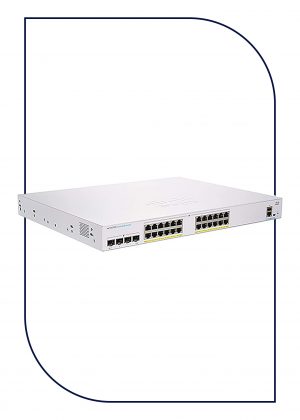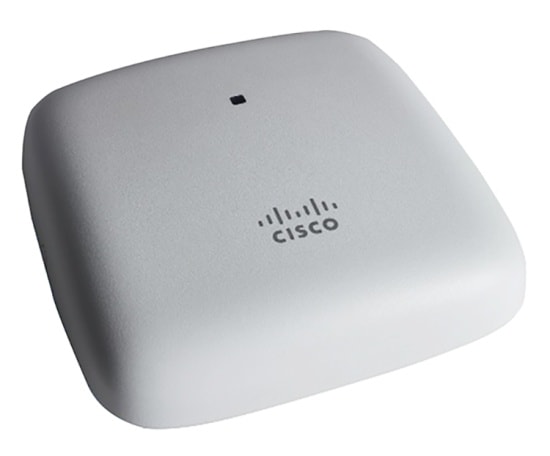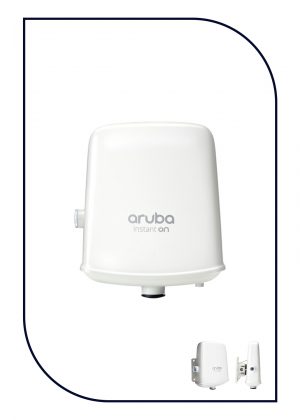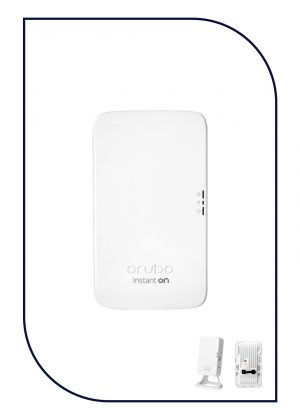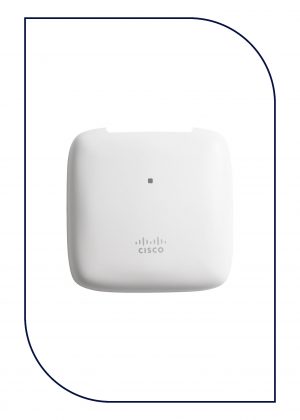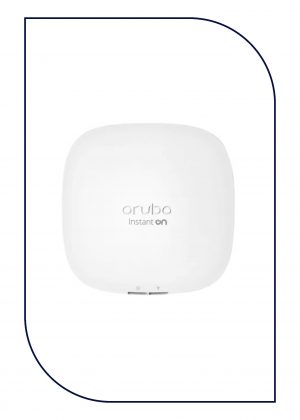Description
1815I
overview
The Cisco Aironet 1815i delivers industry-leading wireless performance with support for the latest Wi-Fi standard, IEEE’s 802.11ac Wave 2 (Figure 1). It also meets the growing requirements of wireless networks by delivering a better user experience.
The 1815i extends support to a new generation of Wi-Fi clients, such as smartphones, tablets, and high-performance laptops that have integrated 802.11ac Wave 1 or Wave 2 support.
Cisco Aironet 1815i Access Point
By adhering to the 802.11ac Wave 2 standard, the 1815i offers a data rate of up to 867 Mbps on the 5-GHz radio. This exceeds the data rates offered by access points that support the 802.11n standard. It also enables a total aggregate dual-radio data rate of up to 1 Gbps. This provides the necessary foundation for enterprise and service provider networks to stay ahead of the performance expectations and needs of their wireless users.
Due to its convenience, in recent years corporate users have increasingly preferred wireless access as the form of network connectivity. Along with this shift, there is an expectation that wireless should not slow down users’ day-to-day work, but should enable a high-performance experience while allowing users to move freely. The 1815i delivers industry-leading performance for highly secure and reliable wireless connections and provides a robust mobility end-user experience.
With the 1815i, you can secure remote workers or the micro-office. Any Cisco Aironet or Catalyst access point can function as an Office Extend Access Point (OEAP). With an OEAP, an employee at home or in a temporary micro-office will have access to the corporate SSID and the corporate network without the need to set up a VPN or have any advanced technical know-how.
Cisco User Defined Network, a feature available in Cisco DNA Center, allows IT to give end users control of their very own wireless network partition on a shared network. End users can then remotely and securely deploy their devices on this network. Perfect for university dormitories or extended hospital stays, Cisco User Defined Network grants both device security and control, allowing each user to choose who can connect to their network. (Available second half of calendar year 2020.)
The Wi-Fi 6 readiness dashboard is a new dashboard in the Assurance menu of Cisco DNA Center. It will look through the inventory of all devices on the network and verify device, software, and client compatibility with the new Wi-Fi 6 standard. After upgrading, advanced wireless analytics will indicate performance and capacity gains as a result of the Wi-Fi 6 deployment. This is an incredible tool that will help your team define where and how the wireless network should be upgraded. It will also give you insights into the access point distribution by protocol (802.11ac/n/abg), wireless airtime efficiency by protocol, and granular performance metrics.
Table 1 lists the features and benefits of the 1815i.
Table 1. Features and benefits
|
Feature |
Benefit |
|
MU-MIMO |
Multiuser (MU) Multiple-Input Multiple-Output (MU-MIMO) allows transmission of data to multiple 802.11ac Wave 2–capable clients simultaneously to improve the client experience. Prior to MU-MIMO, 802.11n and 802.11ac Wave 1 access points could transmit data to only one client at a time, typically referred to as Single-User MIMO (SU‑MIMO). 802.11ac Wave 2 with 2×2:2 MIMO technology uses two spatial streams when operating in SU-MIMO or MU-MIMO mode, offering 867-Mbps rates for more capacity and reliability than competing access points. |
|
Cisco Mobility Express solution |
Flexible deployment through the Mobility Express solution is ideal for small to medium-sized deployments. Easy setup allows the 1815i to be deployed on networks without a physical controller. |
|
Integrated Bluetooth 4.1 |
Integrated Bluetooth Low-Energy (BLE) 4.1 radio for location and asset tracking (future availability). |
Increased wireless performance
The 1815i access point supports the latest 802.11ac Wave 2 standard for higher performance, greater access, and higher-density networks. With simultaneous dual radios and dual band with 802.11ac Wave 2 MU-MIMO functionality, this access point can handle the increasing number of high-bandwidth devices that will soon become a common part of the network.
Wired access
The 1815i allows wired access via a single RJ-45 10/100/1000 auto-detection port. It supports full operation modes using PoE 802.3af power.
Mounting
These sleek access points with a small form factor are designed with flexible mounting options in mind. You can mount them directly on the ceiling or a wall. They are also easy to install.
Table 2 lists the specifications for the Cisco Aironet 1815i Access Point. Table 3 provides the access point’s RF specifications.
Table 2. Specifications
|
Item |
Specification |
|||||||
|
Authentication and security |
● Advanced Encryption Standard (AES) for Wi-Fi Protected Access 3 (WPA3), WPA2, WPA
● 802.1X, RADIUS Authentication, Authorization, and Accounting (AAA)
● 802.11r
● 802.11i
|
|||||||
|
Software |
● Cisco Unified Wireless Network Software with AireOS Wireless Controllers Release 8.3.112.0/83MR1 or later
● Cisco Mobility Express
|
|||||||
|
Supported WLAN controllers |
● Cisco 2500 Series Wireless Controllers, Cisco 3500 Series Wireless Controllers, Cisco Wireless Controller Module for ISR G2, Cisco Wireless Services Module 2 (WiSM2) for Catalyst ® 6500 Series Switches, Cisco 5500 Series Wireless Controllers, Cisco Flex ® 7500 Series Wireless Controllers, Cisco 8500 Series Wireless Controllers, Cisco 9800 series Wireless Controllers.
● Cisco Mobility Express
|
|||||||
|
Maximum clients |
● Maximum number of associated wireless clients: 200 per Wi-Fi radio, in total 400 clients per access point
|
|||||||
|
802.11ac |
● 2×2 single-user/multiuser MIMO with two spatial streams
● Maximal Ratio Combining (MRC)
● 20-, 40- and 80-MHz channels
● PHY data rates up to 866.7 Mbps (80 MHz on 5 GHz)
● Packet aggregation: A-MPDU (Tx/Rx), A-MSDU (Rx)
● 802.11 Dynamic Frequency Selection (DFS)
● Cyclic Shift Diversity (CSD) support
|
|||||||
|
Ethernet ports |
● Authentication with 802.1X or MAC filtered
● Dynamic VLAN or per port
● Traffic locally switched or tunneled back to wireless LAN controller
|
|||||||
|
Bluetooth (future availability) |
● Integrated Bluetooth 4.1 (including BLE) radio
● Maximum transmit power: 4 dBm
● Antenna gain: 2 dBi
|
|||||||
|
Data rates supported |
802.11a: 6, 9, 12, 18, 24, 36, 48, 54 Mbps |
|||||||
|
802.11b/g: 1, 2, 5.5, 6, 9, 11, 12, 18, 24, 36, 48, 54 Mbps |
||||||||






